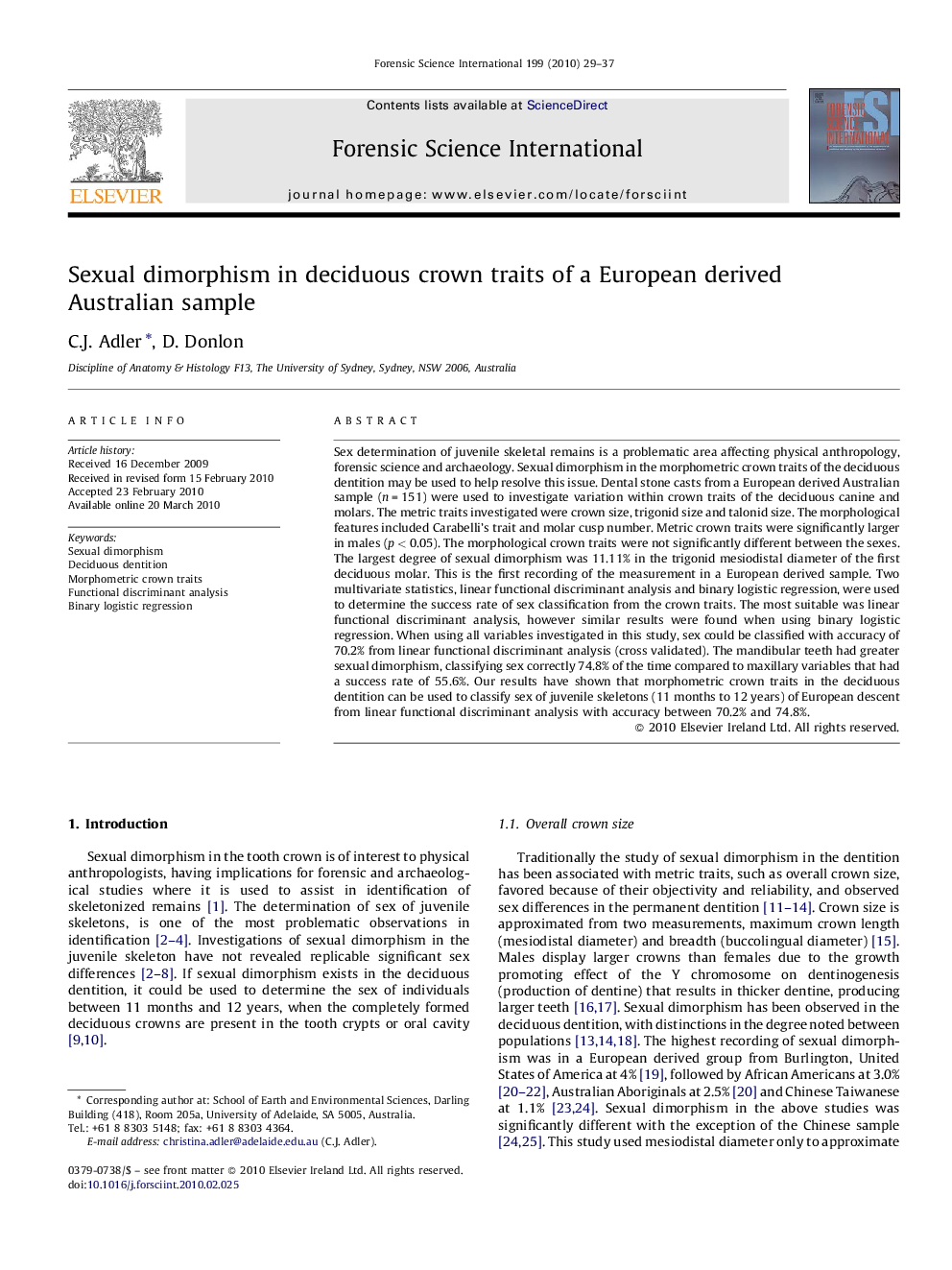| Article ID | Journal | Published Year | Pages | File Type |
|---|---|---|---|---|
| 97039 | Forensic Science International | 2010 | 9 Pages |
Sex determination of juvenile skeletal remains is a problematic area affecting physical anthropology, forensic science and archaeology. Sexual dimorphism in the morphometric crown traits of the deciduous dentition may be used to help resolve this issue. Dental stone casts from a European derived Australian sample (n = 151) were used to investigate variation within crown traits of the deciduous canine and molars. The metric traits investigated were crown size, trigonid size and talonid size. The morphological features included Carabelli's trait and molar cusp number. Metric crown traits were significantly larger in males (p < 0.05). The morphological crown traits were not significantly different between the sexes. The largest degree of sexual dimorphism was 11.11% in the trigonid mesiodistal diameter of the first deciduous molar. This is the first recording of the measurement in a European derived sample. Two multivariate statistics, linear functional discriminant analysis and binary logistic regression, were used to determine the success rate of sex classification from the crown traits. The most suitable was linear functional discriminant analysis, however similar results were found when using binary logistic regression. When using all variables investigated in this study, sex could be classified with accuracy of 70.2% from linear functional discriminant analysis (cross validated). The mandibular teeth had greater sexual dimorphism, classifying sex correctly 74.8% of the time compared to maxillary variables that had a success rate of 55.6%. Our results have shown that morphometric crown traits in the deciduous dentition can be used to classify sex of juvenile skeletons (11 months to 12 years) of European descent from linear functional discriminant analysis with accuracy between 70.2% and 74.8%.
